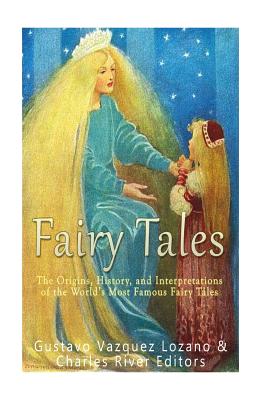Fairy Tales: The Origins, History, and Interpretations of the World's Most Famous Fairy Tales

Fairy Tales: The Origins, History, and Interpretations of the World's Most Famous Fairy Tales
*Includes pictures *Explains how the genre was formed and theories regarding real life origins of popular fairy tales *Includes online resources and a bibliography for further reading Dense forests, evil stepmother, beautiful girl, dwarfs in mines, a prince and, eventually, poisoning (in that order). Sound familiar? Most will recognize the basic plot of Snow White and the Seven Dwarfs, one of the most popular fairy tales in history. Even if the passing of time (and Disney) embellished it with a thousand details, in particular the happy ending, this and other tales reflect the Sitz im Leben or setting in life in which fairy tales emerged. The stories, which were transmitted orally during the Middle Ages, are like fogged windows to the way of life, the kind of people and social conditions of the regions where they took their final shape. In some instances, such as Snow White and the Seven Dwarfs, they may be echoing historical facts. And the poisoned apple? Sander thinks that the lethal fruit was added later, during the stage of oral transmission, in remembrance of a man who really existed in Germany and was arrested for giving poisoned apples to children because he thought they were stealing from him. For centuries, beautifully illustrated fairy tale volumes have rested innocently on kids night tables around the world, long ago relegated to the dubious honor of being branded as "children's literature." But every story is a file packed with information, and Cinderella, Snow White, Puss in Boots and Bluebeard have always intimated that perhaps they have more to tell besides "beautiful" stories, the same ones that animated the minds of several generations of children. Whether or not they had peaceful dreams is another matter, because even in their current versions, sterilized and with their original contents doctored, classic fairy tales are far from innocent stories for five year old children. It was only later, with the arrival of illustrators and then cinema, that they began to become the virtually exclusive domain of underage readers. Like in the secret room where Bluebeard kept his dead wives bodies, or the enchanted forest one should not venture into, fairy tales conceal not only historical events and the depiction of the hard lives of people in the Middle Ages, but according to psychoanalysts, they are also a mirror of truth where people's desires, fears, illicit appetites and flaws are encoded. Snow White's stepmother had a good reason to be so u
Descrierea produsului
*Includes pictures *Explains how the genre was formed and theories regarding real life origins of popular fairy tales *Includes online resources and a bibliography for further reading Dense forests, evil stepmother, beautiful girl, dwarfs in mines, a prince and, eventually, poisoning (in that order). Sound familiar? Most will recognize the basic plot of Snow White and the Seven Dwarfs, one of the most popular fairy tales in history. Even if the passing of time (and Disney) embellished it with a thousand details, in particular the happy ending, this and other tales reflect the Sitz im Leben or setting in life in which fairy tales emerged. The stories, which were transmitted orally during the Middle Ages, are like fogged windows to the way of life, the kind of people and social conditions of the regions where they took their final shape. In some instances, such as Snow White and the Seven Dwarfs, they may be echoing historical facts. And the poisoned apple? Sander thinks that the lethal fruit was added later, during the stage of oral transmission, in remembrance of a man who really existed in Germany and was arrested for giving poisoned apples to children because he thought they were stealing from him. For centuries, beautifully illustrated fairy tale volumes have rested innocently on kids night tables around the world, long ago relegated to the dubious honor of being branded as "children's literature." But every story is a file packed with information, and Cinderella, Snow White, Puss in Boots and Bluebeard have always intimated that perhaps they have more to tell besides "beautiful" stories, the same ones that animated the minds of several generations of children. Whether or not they had peaceful dreams is another matter, because even in their current versions, sterilized and with their original contents doctored, classic fairy tales are far from innocent stories for five year old children. It was only later, with the arrival of illustrators and then cinema, that they began to become the virtually exclusive domain of underage readers. Like in the secret room where Bluebeard kept his dead wives bodies, or the enchanted forest one should not venture into, fairy tales conceal not only historical events and the depiction of the hard lives of people in the Middle Ages, but according to psychoanalysts, they are also a mirror of truth where people's desires, fears, illicit appetites and flaws are encoded. Snow White's stepmother had a good reason to be so u












